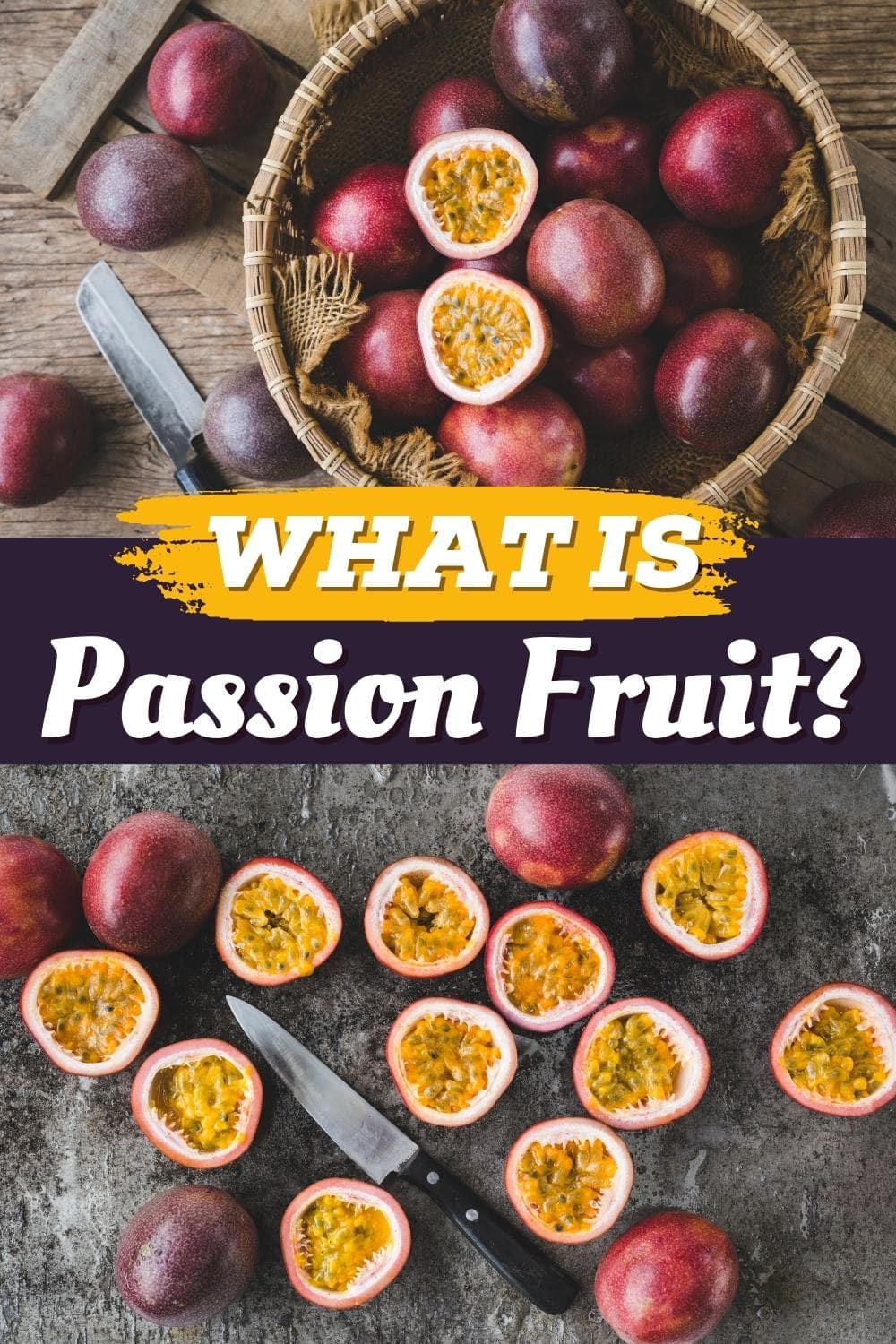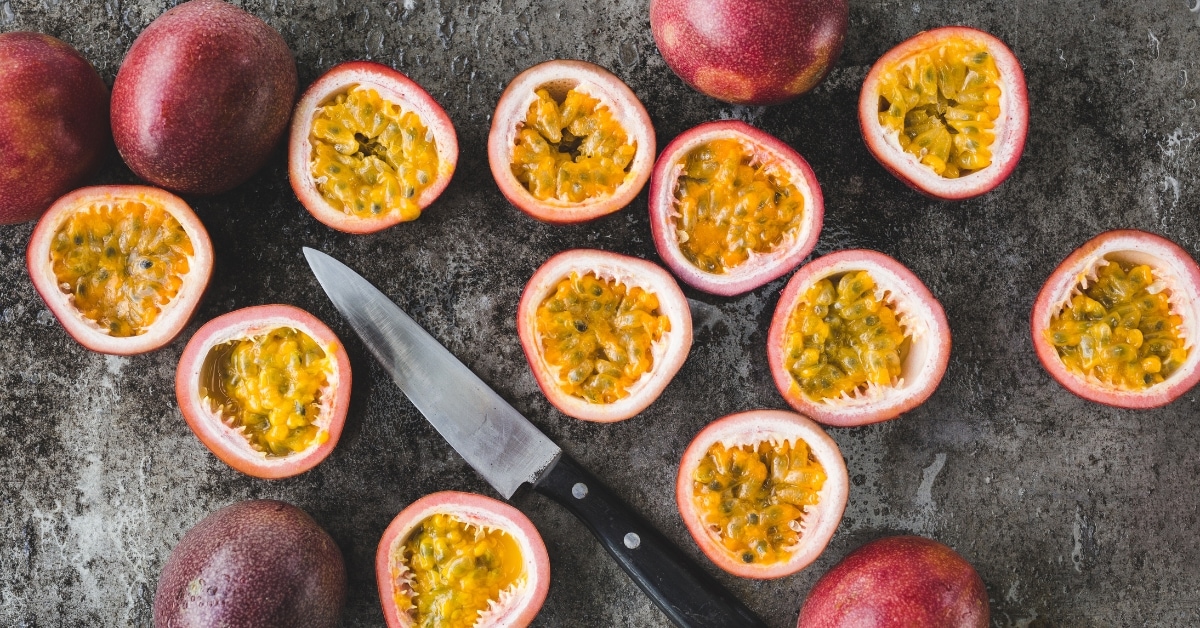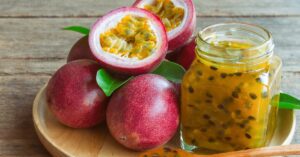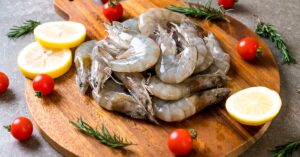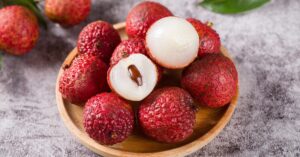I’m sure you’ve seen it in the store, and maybe you’ve even tried it once or twice. But have you ever wondered: what is passion fruit?
Passion fruit (passiflora edulis) is a passion flower grown in tropical and subtropical climates. When ripe, it has thick dark purple to light yellow skin and bright, pulpy flesh. Though it’s most commonly found in Brazil and Argentina, it’s also grown in Australia and New Zealand.

Chances are, you’ve had this unusual fruit before. Maybe it was in a smoothie or cocktail, or you even scooped the flesh out of the skin.
Either way, it’s incredibly delicious.
The floral and aromatic scent works wonders in things like bath products and lotions, too.
So, if you’ve ever found yourself wondering, what is passion fruit? Keep reading! And let’s find out together.
What is Passion Fruit?
I’m so glad you asked.
Passion fruit, also known as passiflora edulis or passiflora flavicarpa, is a type of fruiting passion flower vine. Since the fruit is completely fleshy, it’s classified as a berry. Passion fruit can be eaten raw, seeds and all, right out of the skin. Or it can be pureed and used in cooking.
Initially, they were native to South America. But they’re now growing worldwide.
And though they have those fun scientific names, it’s easier to remember them by color.
Passiflora Edulis
Edulis is purple and the smaller of the pair.
It starts green with smooth, shiny skin. And as it ripens, it darkens and begins to wrinkle.
In my experience, the purple ones are the easiest to find and easy to identify.
They have a dark, reddish-purple rind that looks almost shriveled and almost black when it’s ready to eat.
But the inside is pure gold and full of small, edible, black seeds.
Passiflora Flavicarpa
Flavicarpa, the yellow ones, are more common in Asia and Australia.
They, too, start out green, though they’re usually bigger than the purple variety. And as they ripen, they turn a nice golden yellow.
They’re also wrinkled, and the insides are pretty much the same.
Passion Fruit Benefits
Whether you choose yellow or purple, the rind is not edible.
But the flesh? Oh man, it’s to die for, which is lucky for us because passion fruit is highly nutritious.
So, incorporating passion fruit into your regular diet can yield some serious health benefits:
- It’s loaded with beneficial plant compounds, like antioxidants, that protect your body from disease.
- Passion fruit can help prevent some cancers and boost your immune system.
- It’s also a fantastic source of vitamins A and C, as well as fiber.
And though it’s never been proven, legend says that eating passion fruit leads to love. But maybe it just means you’ll fall in love with this delectable fruit.
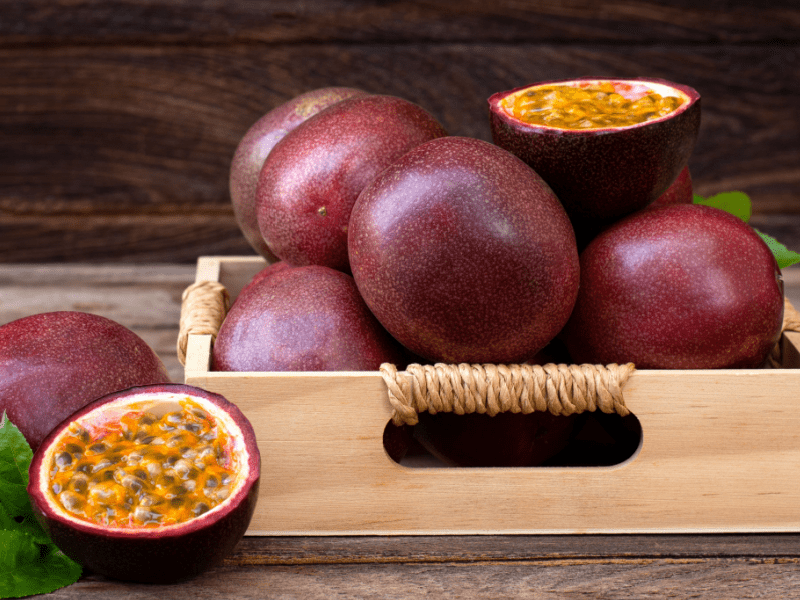
What Does Passion Fruit Taste Like?
While the benefits of eating passion fruit are clearly worthwhile, the taste is important, too.
And luckily, passion fruit tastes like a burst of sunshine in your mouth! It’s absolutely delicious.
Passion fruit is tart and refreshing, with a lovely sweetness. It tastes a little bit like a combination of lemon, pineapple, melon, and kiwi. It’s sweetest when ripe, though it can be tart too. It’s quite sour when it’s unripe.
And as with most fruits, the taste gets a little ferment-y when it’s too ripe. It’s still pretty good, though.
Where to Buy Passion Fruit
If you live in a big city, fresh passion fruit is fairly easy to find.
- Check the exotic produce section of your local supermarket. This is especially true if you live in a sunny city like Miami or LA. And again, you’ll most likely find purple passion fruit.
- Look at your closest Latin or Asian market. NOTE: The Spanish and Portuguese name is Maracuyá/Maracujá. It’s very common to see it by this name in such markets.
- Visit specialty produce stores. They often carry fun, exotic fruits and veggies to try.
- Look in the freezer section. Even in small Midwestern towns, you can find frozen passion fruit chunks, passion fruit juice, and even frozen puree.
- Check online. When all else fails, you can get passion fruit puree on Amazon.
The Funkin brand is excellent for all your cooking, baking, and cocktail needs. It tastes exactly like fresh passion fruit.
For baking and drink-making, I prefer puree.
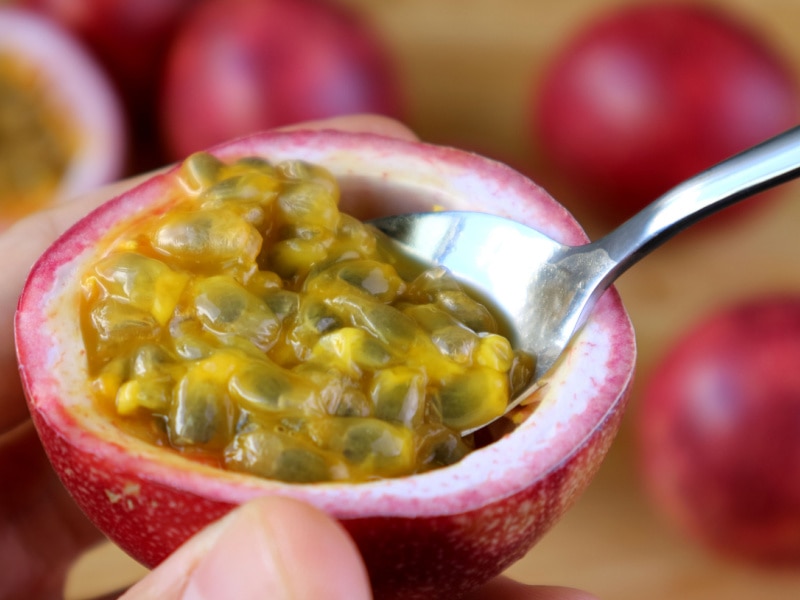
How to Tell If A Passion Fruit Is Ripe
This goes against everything you know about choosing ripe fruits: with passion fruit – the uglier, the better.
Obviously, barring any mold or major bruises, you want it shriveled and dark.
As I said earlier, passion fruits wrinkle as they ripen. They also shrink a little.
So, you’ll know they’re ready when they’ve darkened in color and kinda look like giant raisins.
Also:
- It should feel a little heavy for its size
- If you shake it, you should hear some liquid sloshing around.
- It should have a bright, floral, sweet, and tropical smell.
I recommend choosing unripe, smooth passion fruits in the store (if they already have a few wrinkles, that’s okay, too).
Let them fully ripen at home so you get them at their best.
How to Eat Passion Fruit
It’s really not that complicated:
- Wash it, dry it, and cut it in half horizontally.
- Use a spoon to eat the insides, seeds, and all!
If it’s ripe, you really don’t need anything else. But, of course, it’s extra special as a flavor enhancer to desserts.
For example:
- Swirled into Greek yogurt
- Mixed into fruit salad
- Blended into purees
- Spooned over pavlova
- Mixed into frosting
- As curd in cakes and tarts
Its sweet, tropical flavor goes with pretty much anything!
How to Make Passion Fruit Juice
On its own, passion fruit pulp is very sweet and tart. In fact, the taste is so concentrated, it can be too much for some.
So, it’s a good idea to incorporate it into recipes and dishes like those mentioned above.
But one of my favorite ways to enjoy it is as a juice in the morning. Here’s how to make it at home:
Ingredients
- 1 part passion fruit puree
- 3-4 parts water
- Sugar, to taste
You can use ready-made puree or make it yourself using the steps below.
Method
- Cut the passion fruit in half and scoop the flesh and seeds into a blender.
- Add a splash of water and pulse a few times to separate the pulp from the seeds.
- Pour the passion fruit into a strainer over a pitcher, using the back of a spoon to pass it through.
- Depending on how much puree you get, add water and sugar, if needed. For example, if you have 1 cup of puree, you’ll need about 3 cups of water,
- Stir, chill, and enjoy!

How to Store Passion Fruit
Passion fruits are typically picked when the rind is really smooth. So that’s when I like to buy them and leave them to ripen on my counter.
Smooth passion fruits will take anywhere from 3-7 days to ripen at room temperature. And you can just leave them in a bowl.
But if the fruit is beginning to wrinkle, put them in the fridge. They’re best if you put them in the crisper drawer.
Ripe passion fruits will last about a week in the fridge.
But passion fruit juice and puree freeze really well! They’ll last for up to 6 months in an airtight, freezer-safe container.
